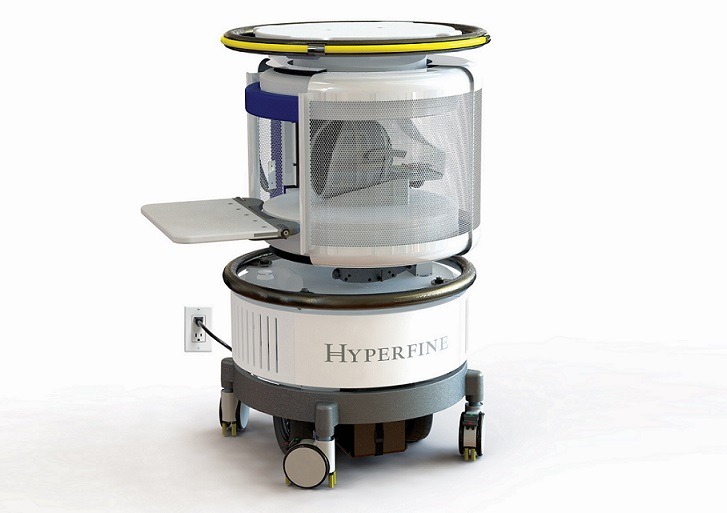A portable, low-field magnetic resonance imaging (MRI) system may become a safe and practical way to get accurate brain images at a patient’s bedside, according to preliminary research to be presented at the American Stroke Association’s International Stroke Conference 2020 (19–21 February, Los Angeles, USA).

“We have flipped the concept from having to get patients to the MRI to bringing the MRI to the patients,” said Kevin Sheth, senior author and chief physician, Division of Neurocritical Care and Emergency Neurology at Yale School of Medicine, New Haven, USA. “This early work suggests our approach is safe and viable in a complex clinical care environment.”
Eighty-five stroke patients (46% women, age 18–96, 46% ischaemic stroke, 34% intracerebral haemorrhage, 20% subarachnoid haemorrhage) received bedside, low-field MRI within seven days of symptom onset. The exam time averaged about 30 minutes, and most patients were able to complete the entire exam. However, five patients could not fit into the 30cm opening of the MRI machine, and six patients experienced claustrophobia, factors which halted their test.
“We started this research several years ago because obtaining accessible, meaningful brain imaging for patients has been a major worldwide health care gap for decades,” Sheth said. “The whole thing works because we are using low-field magnets to acquire brain images after a stroke.”
Currently, patients must travel to the location of a high-field MRI device. However, advances in low-field MRI have enabled acquisition of clinically useful images using a portable device at bedside.
“High-field magnets are the cornerstone of commercial MRIs. The portable, low-field MRI could be used at hospitals that currently have a high-field MRI and in any other setting where an MRI is currently not available.” He added that the portable MRI devices will also decrease need for a special power supply, cooling requirements, cost and other barriers that currently limit easy patient access
In addition, the low-field, bedside MRI scanner did not interfere with other equipment, and metals did not need to be removed from the room. No significant adverse events were reported. “There is a lot of work to do, however, we have cracked the door open for bringing this technology to any setting, anywhere. In rural settings, urban advanced hospitals and in remote villages in areas of the world where it is hard to get an MRI—not anymore,” Sheth said.
Sheth said next steps include scanning more patients, improving image quality, using the devices in multiple settings and using machine learning to extract as much meaningful information as possible.













